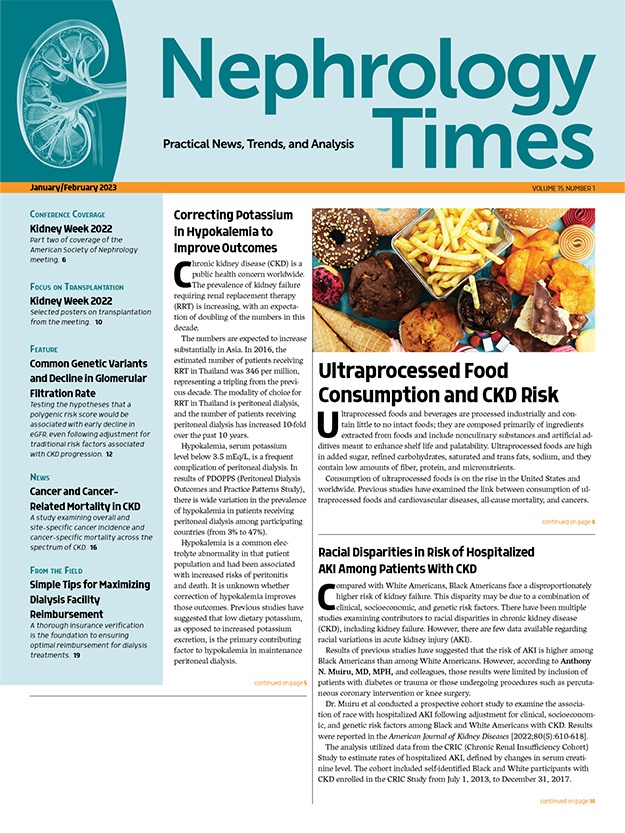
Patients with kidney failure receiving maintenance hemodialysis with central venous catheters (CVCs) are at increased risk of catheter-related bloodstream infections (CRBSIs). CRBSI is a preventable complication in CVC-dependent hemodialysis and is associated with high rates of morbidity and mortality from long-term complications.
Researchers at CorMedix Inc. conducted a retrospective propensity score-matched analysis of 2013-2018 linked data to examine the incremental real-world clinical burden of CRBSIs in both inpatient and outpatient settings among patients with CVC-dependent hemodialysis. Results were reported during a poster session at the 2022 American Society of Health-System Pharmacists Midyear Clinical Meeting & Exhibition in a poster titled Mortality Risk and Long-Term Complications Associated With Catheter-Related Bloodstream Infections (CRBSIs).
The analysis linked data from the United States Renal Data System, CROWNWeb, and Medicare claims. Eligible study participants had kidney failure and initiated CVC hemodialysis during 2014-2017 and had at least 1 year pre-index CVC hemodialysis and at least 1 year CVC hemodialysis follow-up. Post CVC insertion date, patients with occurrence or no occurrence of CRBSI (CRBSI/no CRBSI) were identified on index date/assigned index date in inpatient or outpatient settings, respectively.
The study outcomes of interest were incidence and 1-year post-CRBSI incremental rates of stroke, myocardial infarction (MI), heart failure (HF), peripheral vascular disease (PVD), and dysrhythmia. Secondary outcomes included mortality within 1 year of CRSI index/assigned index date.
Patient demographics were described using frequencies and proportions for categorical variables and mean and standard deviations for continuous variables. Cramer’s V and Wilcoxon tests were used to compare differences in baseline characteristics between CRSBI and no CRSBI patients. Associations between CRSBI and mortality and long-term complications were assessed using Cox proportional hazards models.
Of the 51,161 CVC hemodialysis patients analyzed, nearly 33% developed a CRBSI. Median time to CRBSI was 107 days. Eighty-one percent (n=13,559) were diagnosed in inpatient settings and 19% (n=3254) were diagnosed in outpatient settings. CRSBI developed in 33% (n=4804) of cases within 30 days and in 47% (n=6922) within 90 days of CVC insertions in unmatched patients.
CRBSI occurrence was associated with high rates of cardiovascular events, including dysrhythmia, HF, MI, PVD, and stroke. Overall, the 1-year mortality rate among patients with CRBSI was 36%. Mortality rates among CRBSI patients at 30 days were nearly five times greater than among patients who did not develop CRBSI. At 90 days post CVC insertion, the mortality rates were nearly four times greater among patients with CRBSI.
In conclusion, the researchers said, “The high magnitude of morbidity and mortality burden associated with CRBSIs underscores the importance of early intervention to prevent CRBSIs among kidney failure patients with CVC hemodialysis.”
Source: Massey K, Rajagopalan K, Seyedin R. Mortality risk and long-term complications associated with catheter-related bloodstream infections (CRBIs). Poster presented at the American Society of Health-System Pharmacists Midyear Clinical Meeting & Exhibition; December 4-8, 2022; Las Vegas, Nevada. Funding for the analysis was provided by CorMedix Inc.







 © 2025 Mashup Media, LLC, a Formedics Property. All Rights Reserved.
© 2025 Mashup Media, LLC, a Formedics Property. All Rights Reserved.